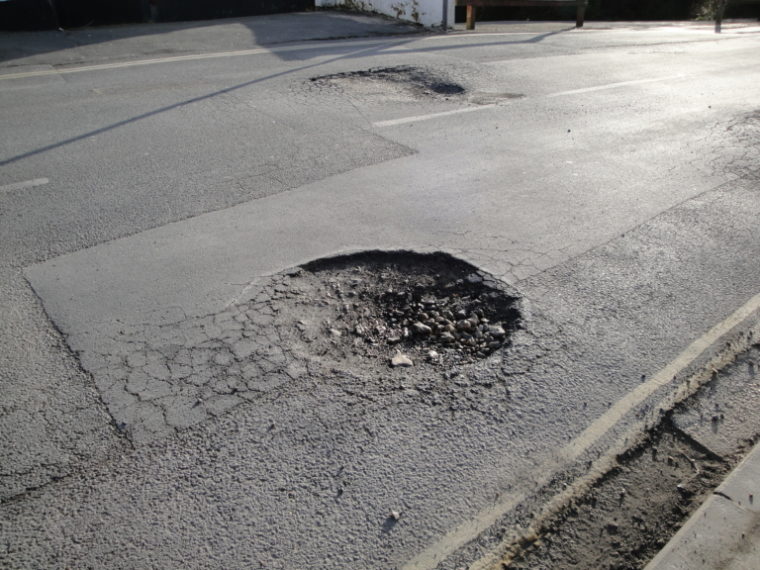
Early one recent Saturday morning, half a dozen residents of Hamtramck, a city of 22,000 in Michigan, spent the morning patching potholes along a city street in an area of town where they live. The citizens worked with 900 pounds of cold patch asphalt, which they had jointly purchased with no assistance from the city, and did the work themselves. While this is hard to believe…it really happened. Most city streets in Hamtramck are pitted with potholes and the people who drive the streets regularly know the potholes are dangerous. Rather than wait for help from the city, some citizens decided to take matters – and shovels – into their own hands.
The citizen-led project was successful and it garnered so much attention that an online GoFundMe campaign was launched with the goal of collecting $5,000 to address other street maintenance needs in 120 more residential blocks. Citizens offered to donate their labor as well if the funds could be raised.
 Hamtramck is another financially distressed city located in Michigan that has been struggling with revenue shortages due to issues beyond its control – weakening property tax revenues, rising employee pension costs and declining state and federal funding.But, city leaders have been so active, creative and successful in pursuing grant funding of every type, the city was recently the focus of a major business publication. Most cities and counties are not dealing with the same level of revenue reductions, but almost all public officials are being forced to be creative and innovative. They must find ways to either increase revenues or stretch budgets in new ways to provide citizen services and revitalize the local economy.
Hamtramck is another financially distressed city located in Michigan that has been struggling with revenue shortages due to issues beyond its control – weakening property tax revenues, rising employee pension costs and declining state and federal funding.But, city leaders have been so active, creative and successful in pursuing grant funding of every type, the city was recently the focus of a major business publication. Most cities and counties are not dealing with the same level of revenue reductions, but almost all public officials are being forced to be creative and innovative. They must find ways to either increase revenues or stretch budgets in new ways to provide citizen services and revitalize the local economy.
In Buchanan County, Iowa, about 10 percent of the county’s bridges are now being constructed from converted railroad cars. The railroad cars become available when they are retired because of adjustments to federal regulations. Additionally, some of the metal and wood on the old bridges is salvaged for other uses. The county saves money while focusing on recycling and sustainability efforts.
Fourteen towns, three villages and one city in Clinton County, N.Y., are ironing out the details of a shared services plan that will reduce costs for all 18 municipalities. The state has pledged to match any savings realized by the plan. The initiative will consolidate animal control services, snow and ice removal and assessment services. The County Sheriff’s Department will manage a police department in one of the villages and a study is underway seeking best practices related to consolidating other common needs such as human resources and technology services.
Following nearly a decade of declines in sales tax revenue, the city of Columbia, Mo., is exploring a plan to hire four civilian police officers. The new hires would not require the same degree of training if they performed the more administrative types of functions.
In New Jersey, the city of Bayonne has inked an initiative that could produce cost savings of between $400,000 and $1.5 million. The city will enter into an inter-local shared prescription drug program with the Bayonne Board of Education. The new insurance plan will reduce administrative costs by at least 20 percent immediately and there will be other efficiencies as well.
Out of necessity, local government leaders are exploring all options as they react to increasing needs and decreasing revenues. Always resourceful, visionary and determined public leaders are using ingenuity, innovation and creativity to counter funding cuts that otherwise would have a huge negative impact on citizens and taxpayers.
